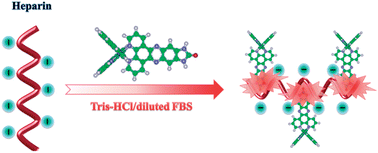A new fluorescence “switch on” assay for heparin detection by using a functional ruthenium polypyridyl complex†
Abstract
In the present study, a new strategy for

* Corresponding authors
a
Department of Chemistry, Tongji University, Shanghai 200092, China
E-mail:
tmyao@tongji.edu.cn, shishuo@tongji.edu.cn
Fax: +86 021 65983292
Tel: +86 021 65983292
In the present study, a new strategy for

 Please wait while we load your content...
Something went wrong. Try again?
Please wait while we load your content...
Something went wrong. Try again?
T. Cheng, J. Yao, X. Gao, W. Sun, S. Shi and T. Yao, Analyst, 2013, 138, 3483 DOI: 10.1039/C3AN00242J
To request permission to reproduce material from this article, please go to the Copyright Clearance Center request page.
If you are an author contributing to an RSC publication, you do not need to request permission provided correct acknowledgement is given.
If you are the author of this article, you do not need to request permission to reproduce figures and diagrams provided correct acknowledgement is given. If you want to reproduce the whole article in a third-party publication (excluding your thesis/dissertation for which permission is not required) please go to the Copyright Clearance Center request page.
Read more about how to correctly acknowledge RSC content.
 Fetching data from CrossRef.
Fetching data from CrossRef.
This may take some time to load.
Loading related content
